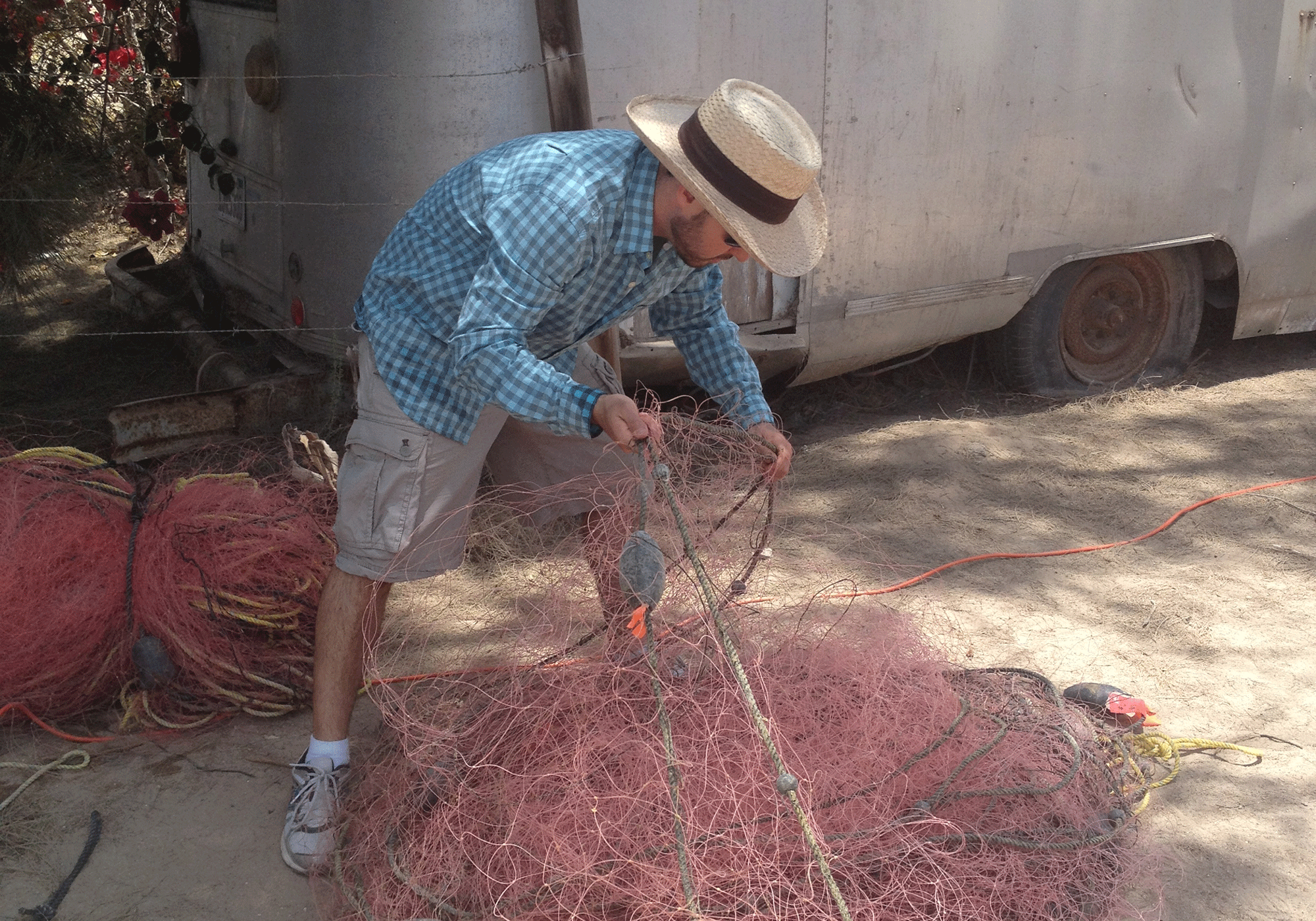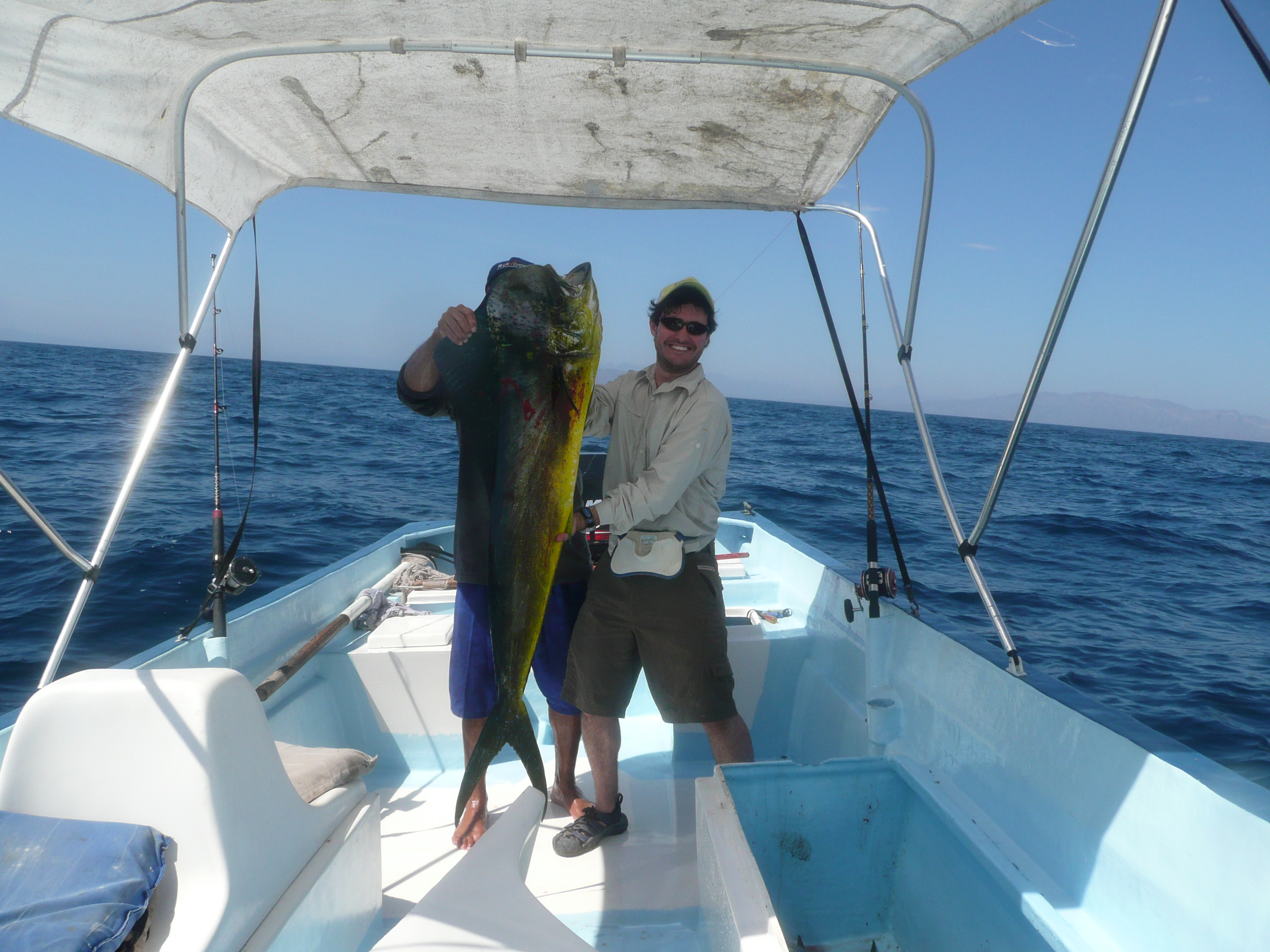Solar fishing lights: One biologist’s bright idea, inspired by a lifetime love of the sea

When trawlers head out to sea to fish for halibut, tuna and swordfish, fishermen spend hours attaching glow sticks near hooks so fish can see the bait.
They’ll go through hundreds and thousands of glow sticks, tossing them overboard when the catch is hauled in. It’s a cost of doing business, like fuel or bait, and it adds to the tremendous amount of plastic trash in the world’s oceans.
Now imagine something different: miniaturized solar-powered lights on longlines and nets that charge on the deck, cut back on labor, save money and don’t end up contributing to marine pollution. They’ll also save bycatchIn commercial fishing, bycatch is a fish or other marine animal that is unintentionally caught in nets while fishing for a different species. of endangered sea turtles and sharks in gillnet fisheries.
“This is the future of fisheries,” said Jesse Senko, a biologist at Arizona State University’s School for the Future of Innovation in Society. “Around the world, they are going to be fishing with solar-powered nets and solar-powered longlines. With a solar-powered light, you don’t do anything. You’re out on the ocean — you have a ton of sunlight, and it’s free.”
It would also contribute toward the marketability of catch. Everywhere from coastal restaurants to mega chains like Target, McDonald’s and Whole Foods tout “sustainably caught” seafood because consumers want it. Fishing gear that doesn’t add to marine trash and helps prevent endangered bycatch helps earn that label.
“They’re doing it because they can make money off of it,” Senko said. “People want it. ... There is more demand than there is supply. Seafood is becoming such a luxury item right now. People are willing to pay a premium for it. They’re willing to pay for it if they know it’s sustainably sourced, if it’s fresh, if it’s local.”
And it’s not yet more government oversight over fishermen.
“The great thing about this is it doesn’t require regulations,” said Senko. “It’s a total bottom-up approach. It’s not the government saying you have to do this or you have to do that. It’s how can we create solutions they want to use? ... They’re only using the light sticks because it’s the cheapest option.”
ASU biologist Jesse Senko flags gillnets while in Mexico so fishermen know where to put lights. The lights attract fish and discourage sharks and sea turtles. Photo courtesy of Jesse Senko
Senko came up with the idea working on his PhD in Baja California, Mexico. He put battery-powered lights on gillnets to reduce sea turtle bycatch. (The turtles can see the net and avoid it.) What he found was there was a 50 percent reduction in turtle bycatch and a 90 percent reduction in shark bycatch. He has seen turtles swim up to nets and turn around.
“What I found was fishermen would not use the lights because of the batteries,” Senko said. “They only lasted a week.”
They were also expensive to fishermen who went out in boats the size of a conference table and used handheld GPS units. Replacing them on a wet deck was another problem.
“Fishing is a tough industry,” Senko said. “People don’t realize it.”
His father first took him fishing when he was 3. He surf-cast for snapper blues, ate winter flounder for breakfast as a kid, and still keeps a boat on the water in Bridgeport. He majored in fisheries and wildlife sciences at the University of Connecticut, received his master’s in wildlife ecology and conservation from the University of Florida and earned his PhD in biology from Arizona State University.
“That’s what helps with my research,” he said. “I’ve been fishing since I was in diapers. I grew up on the water. I grew up on Long Island Sound.”
Senko considers himself a blue-collar PhD.
“To me it’s a source of pride I’m not an academic who just stays in his ivory tower and lectures about how bad fishermen are and how the world is ending,” he said. “I like the fact I can roll up my sleeves and go work with these guys.”
He has to develop a technology that doesn’t exist. Right now the goal is to get something solar-powered that works. Senko is partnering with ASU’s Solar Power Laboratory and NOAA Fisheries to develop it.
He recently received a Disney Conservation Fund grant of $50,000 to begin working on it, as well as $45,000 over the next three years from the World Wildlife Fund. He is working on larger-scale proposals for the National Science Foundation and the National Fish and Wildlife Federation.
Jesse Senko holds a dorado he caught in the Gulf of California. Senko has been fishing since age 3, and coming up with sustainable solutions for fishermen was a natural fit. Photo courtesy of Jesse Senko
The solar panels have to emit enough energy to light up gear for 12 hours, with potentially minutes of charging time. Solar-panel engineers believe the concept is workable.
“Jesse provided us with a new challenge as saltwater is really hard on any electronics and we also need to be able to survive the pounding of the ocean,” said Stuart BowdenBowden is an associate research professor in ASU’s School of Electrical, Computer and Energy Engineering in the Ira A. Fulton Schools of Engineering. of ASU’s Solar Power Lab. “I’m motivated by the environmental benefits of solar. But solar-powered lights to warn turtles? Now that’s a motivator! Especially cool that Jesse has the data to show the number of turtles saved.
“Normally we think about how to provide terawatts of power for the whole planet. This is at the other end of the scale with only milliwatts needed. However, it came at just the right time as we’d just come up with a new cell design that is ideal for small power applications.”
Senko sees his mission as solving a number of problems while simultaneously increasing opportunity for fishermen.
“You’re reducing global plastic pollution,” he said. “You’re increasing (renewable) energy use. You’re saving endangered species, primarily turtles and sharks. It’s a cleaner fishery. And you’re helping fishermen, who are always blamed. They’re always the bad guys that governments around the world are always cracking down on. It’s not only that. We can then help them market their seafood as sustainably caught. We can help you get into a premium market because you’re using this technology.”
More Environment and sustainability

Switching to 'green' plastic alone won’t solve the plastic problem, study shows
Plastic is everywhere. Today alone, you have probably already touched a whole lot of it, whether it’s your phone case, sunglasses, a grocery bag or your water bottle. It’s no news that plastic…

ASU prof turns trash into treasure
The Research Corporation for Science Advancement, or RCSA, regularly hosts a series of discussions known as Scialog, a portmanteau of science and dialogue. Created in 2010, the Scialog format…

Best outdoor experiences are shared and build connections, recreation professor says
Steve Sassaman doesn’t really need to tell you he’s an outdoorsman. One look at his full, dark beard gives a vibe that clearly says he knows which end of the kayak to put into the water first.While…

